Download the presentation of this section.
How do we use now the concept of schema to build content. Let’s look at the video first.
Tom Sherrington’s Four ‘strands’
Tom Sherrington’s divides Rosenshine’s principles into four ‘strands’, in his book, Rosenshine’s Principles in Action.
Sherrington uses the strands to explain Rosenshine’s principles, by connecting the principles with those to which they bear the closest relations, illustrating how the principles complement and support one another, and offering practical advice for their implementation, in addition to that offered by Rosenshine.
A dettailed synthesis of Sherrington’s book has been done on the website of The Tony Little Centre, this is a summary:
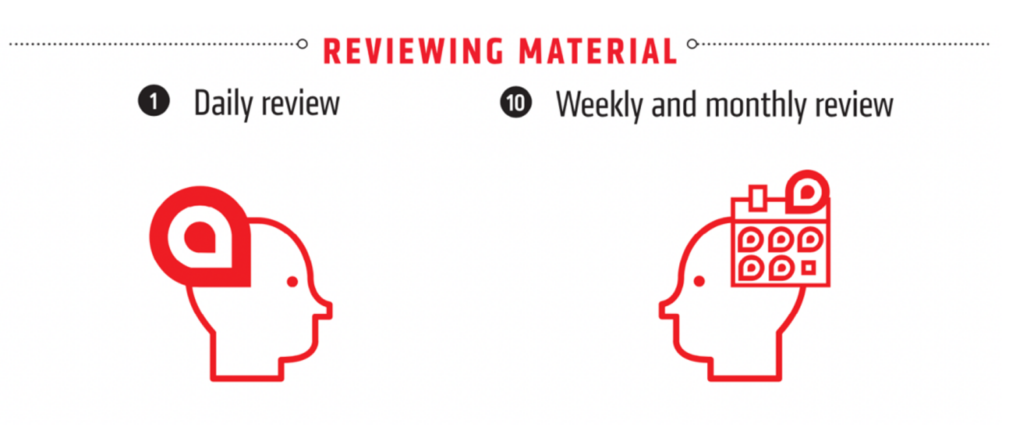
Daily review is important in helping to resurface prior learning from the last lesson. Let’s not be surprised that students don’t immediately remember everything. They won’t!
Reviewing a powerful technique for building fluency and confidence and it’s especially important if we’re about to introduce new learning – to activiate relevant prior learning and working. Review “can help us strenghten the connections among the material we have learned” (Rosenshein), so reviewing should be automatic, creating an ’automaticity’
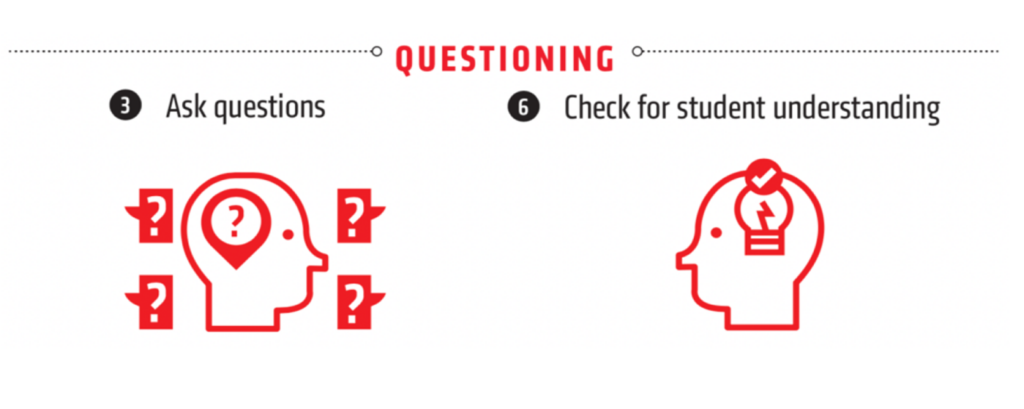
Rosenshine’s research showed that ‘more effective teachers’ – i.e., teachers whose classrooms made the highest gains in standardised achievement tests – ‘spent more than half of the class time lecturing, demonstrating and asking questions’ Asking students the right kinds of questions has the benefit of giving teachers an idea of how successfully material has been learned. Sherrington writes that the purpose of checking understanding is to ensure that any misconceptions concerning the material learned have been addressed. Sherrington summarises this strand with the recommendation that teachers ask more questions to more students in more depth.
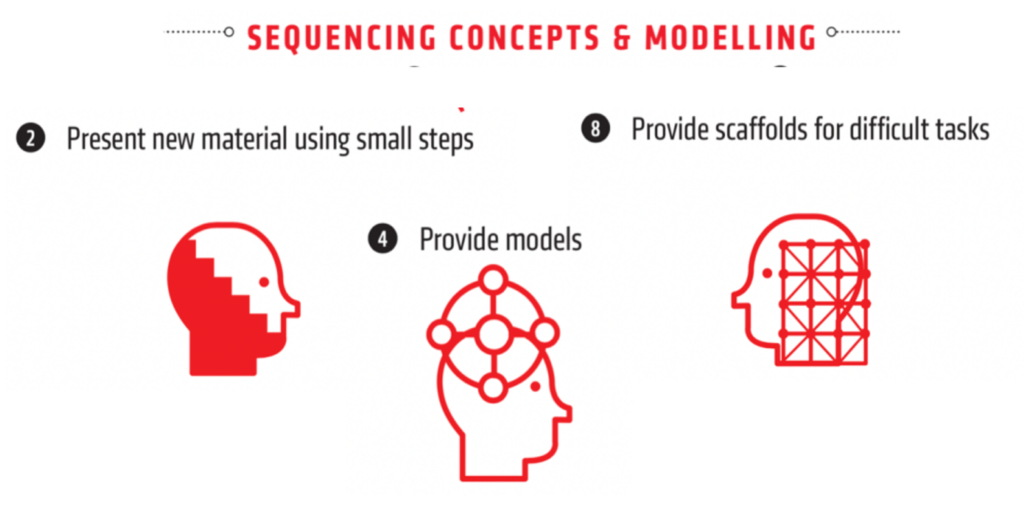
Rosenshine’s second principle emphasises the importance of learning material in small steps, given the limited capacity of our working memory.
To avoid cognitive overload, Rosenshine argues that teachers should present information in small steps and only proceed to the next step once the previous steps have been mastered. Modelling helps with learning by, for example, helping students see how to solve problems or structure essays. Modelling complements the second principle because it can help to clarify the specific steps involved in learning.
‘Scaffolds’ are temporary instructional supports used to assist learners, which should be gradually withdrawn as students gain competency. Modelling can function as a form of scaffolding, as can teaching methods such as the teacher thinking aloud. ‘Thinking aloud’ is a form of scaffolding where a teacher shows the thought processes they go through as they undertake a task which students need to learn how to perform themselves.
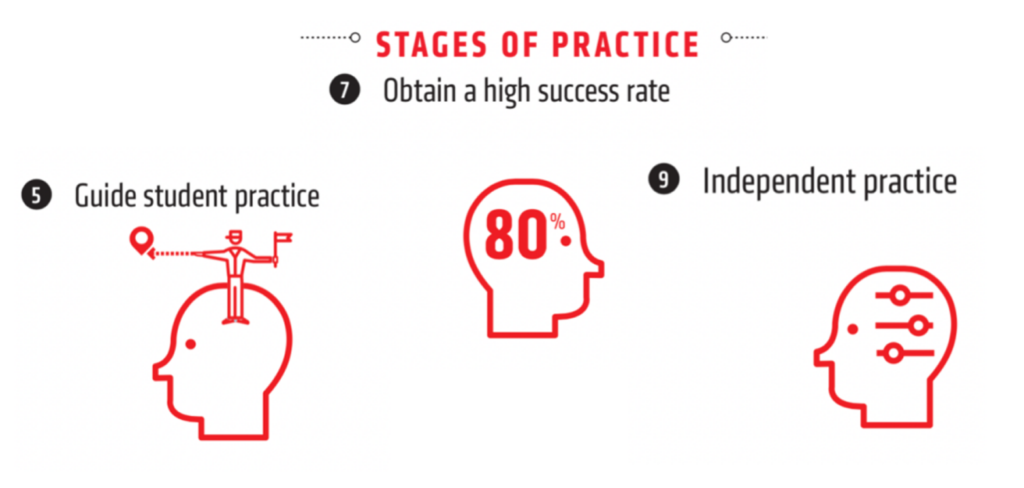
Rosenshine’s fifth principle states that teachers should build more time into lessons for guided student practice of the tasks and material learned. Rosenshine observes that more effective teachers do this. Practice is required to store what is learned in long-term memory; the best form of guided practice is that which is guided by an expert.
Sherrington writes that guided practice involves close supervision and feedback from teachers. Teachers need to observe students’ attempts to learn and complete tasks, to ensure that they build confidence and do not make too many errors.
Examples of Rosenshins’s principles of Instruction
The principles can be used on a very easy but effective manner, e.g. by using reviewing templates as retrieval practice.
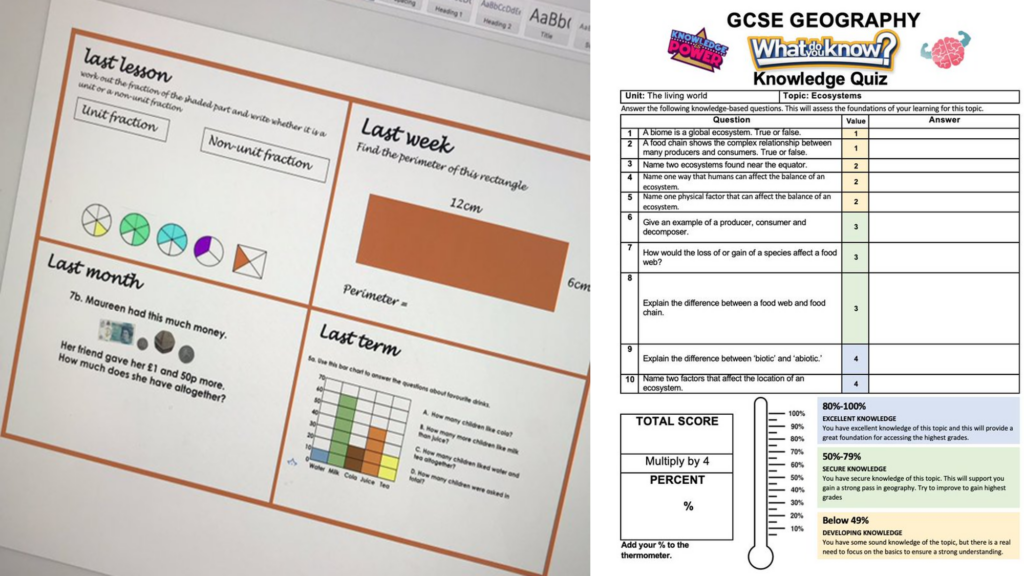
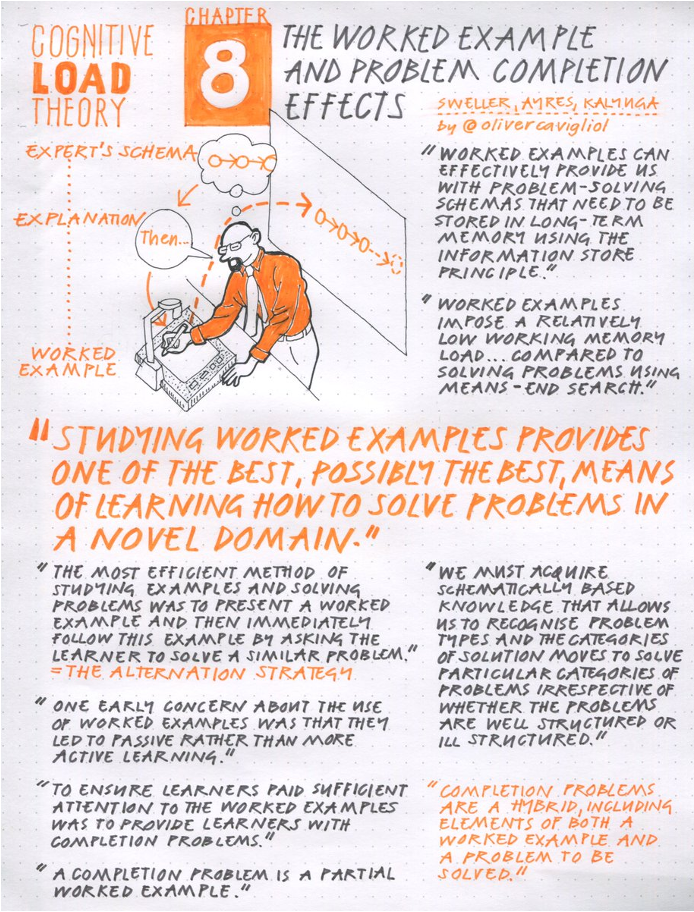
Another example of CLT is the worked example effect: a step-by-step demonstration of how to perform a task or how to solve a problem’ (Clark, Nguyen, Sweller, 2006, p. 190). The ‘expert’ supports ‘novices’ by modelling (could be live modelling) a complex task e.g. problem-solving; structuring a paragraph or essay. The advantage: the expert is sharing mental models or schema to provide ‘scaffolding’ for novices.
